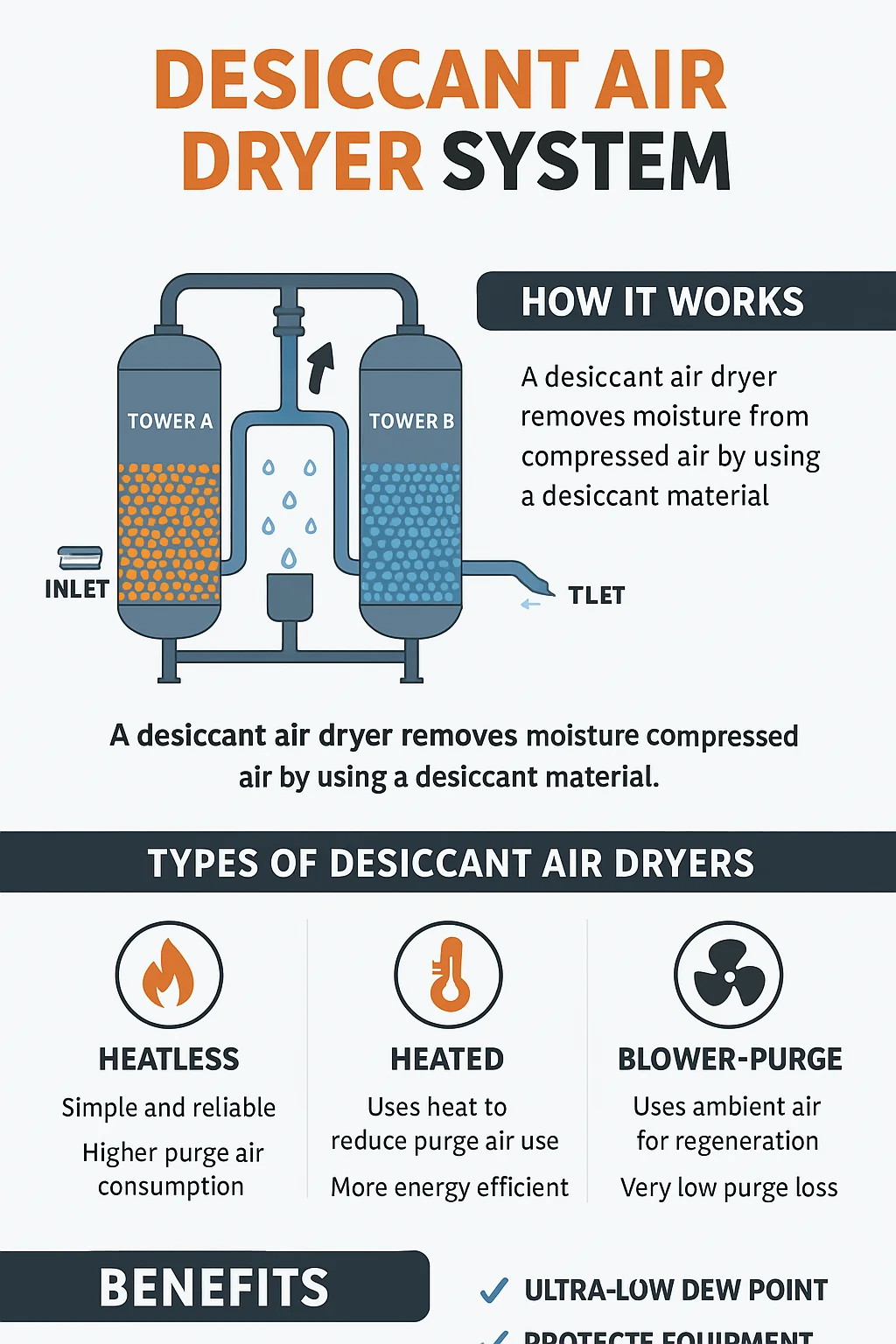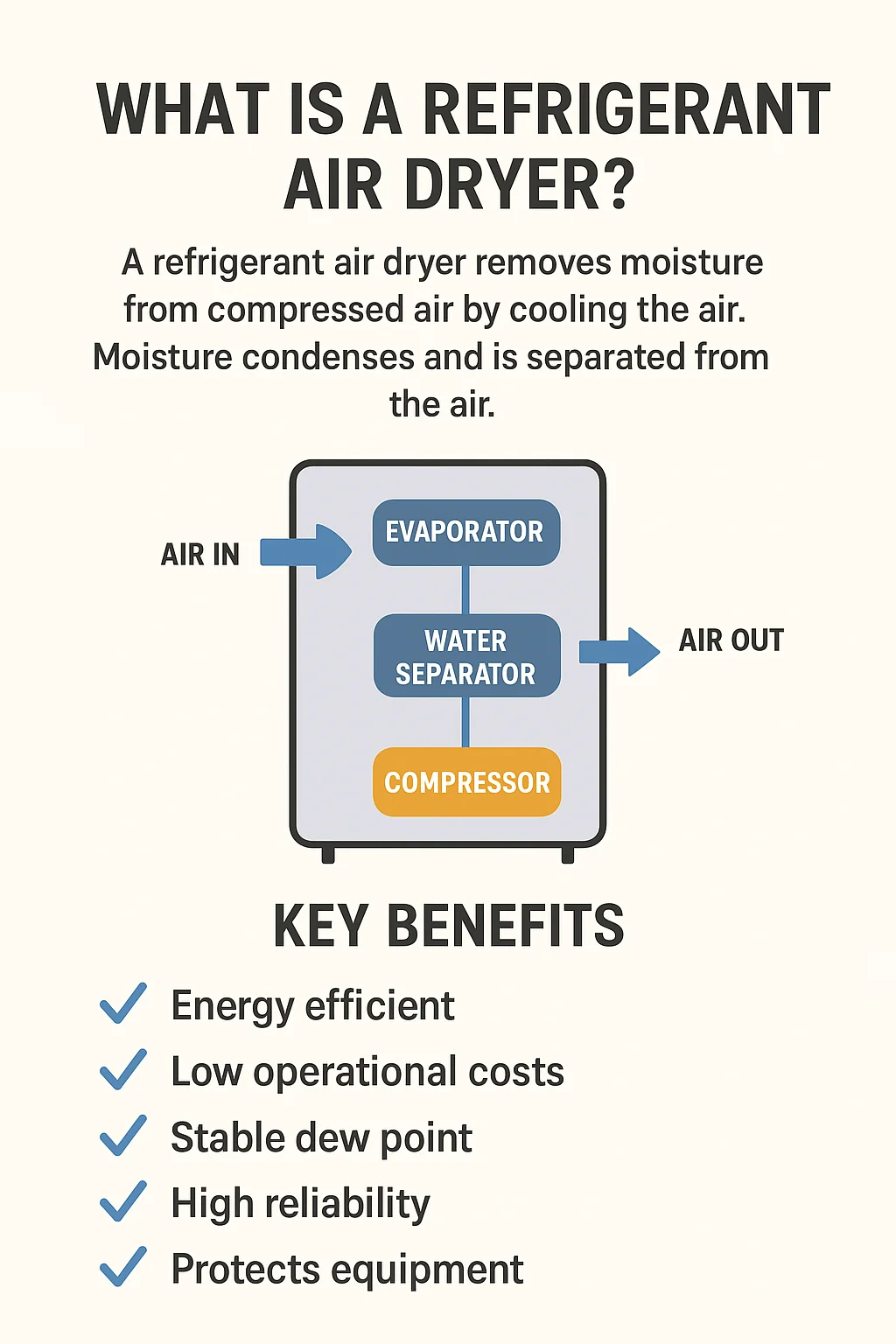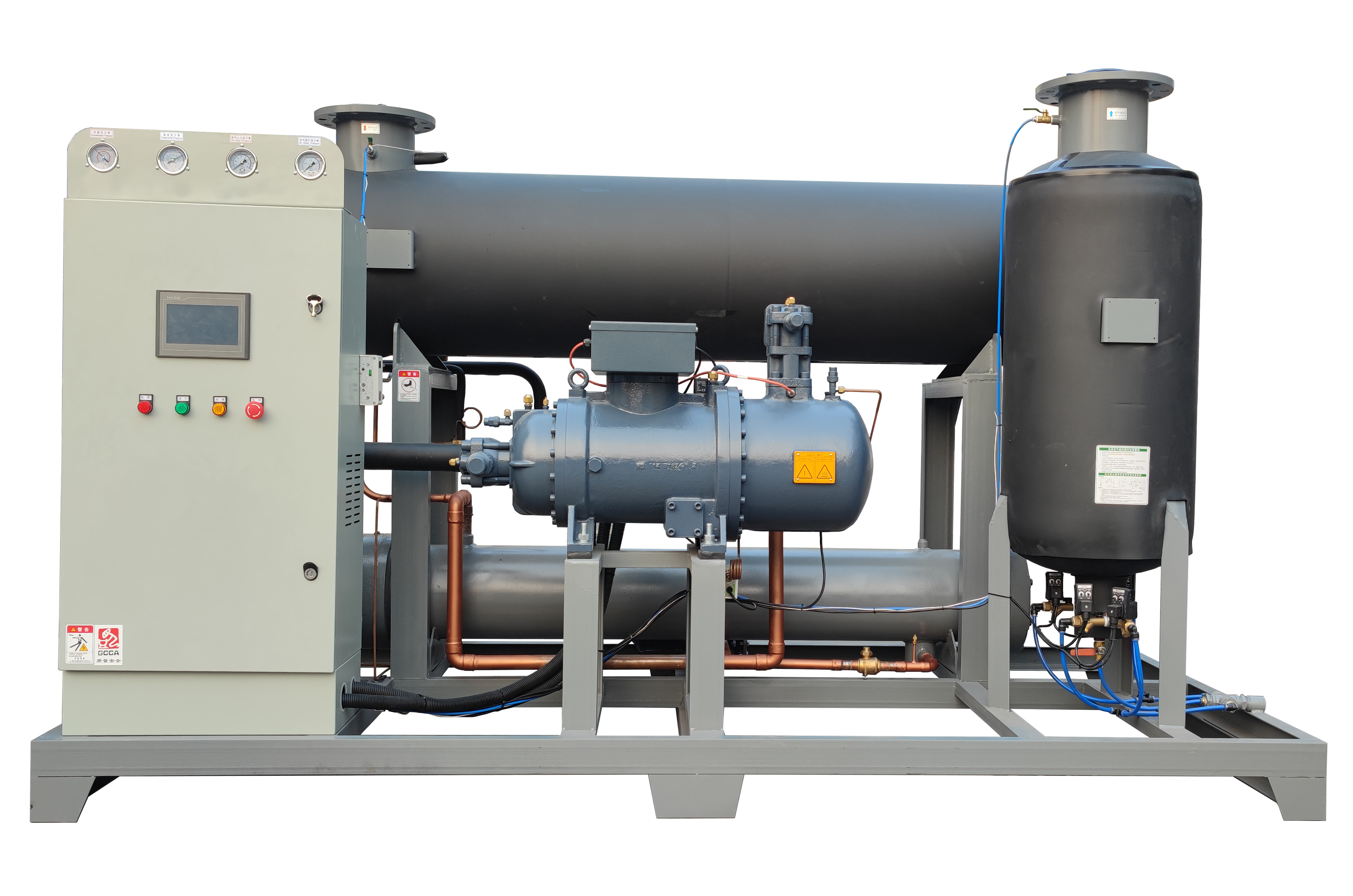
In this in-depth guide, we’ll explore how high temperature refrigerated air dryers work, their benefits, selection criteria, maintenance practices, and common FAQs. By the end, you’ll have a comprehensive understanding of how to keep your compressed air system running efficiently—even under extreme conditions.
What Is a High Temperature Refrigerated Air Dryer?
A high temperature refrigerated air dryer is a type of compressed air dryer designed to handle elevated inlet air temperatures, typically up to 180°F (82°C). Unlike standard dryers that operate within lower temperature ranges, these units incorporate a built-in aftercooler and moisture separator, making them ideal for piston (reciprocating) air compressors.
These dryers remove water vapor from compressed air by cooling it, which causes the moisture to condense and be removed from the system. The result is clean, dry air that protects downstream tools and machinery from corrosion, wear, and performance degradation.
How Does a High Temperature Refrigerated Air Dryer Work?
The working principle of a high temperature refrigerated air dryer involves several stages:
1. Hot Air Inlet
Compressed air enters the dryer directly from the compressor at high temperatures—usually between 150°F and 180°F.
2. Built-in Aftercooler
The integrated aftercooler cools the hot compressed air, allowing a large portion of the moisture to condense.
3. Refrigeration Cycle
The cooled air enters the refrigeration system, which lowers the air temperature further—usually to 35–50°F (1.6–10°C). Additional condensation occurs here.
4. Moisture Separation
Condensed water is separated from the air using an internal separator and is drained from the system.
5. Dry Air Outlet
The clean, dry air exits the dryer, ready for use in tools, equipment, or processes that require low-moisture air.
Why Use a High Temperature Refrigerated Air Dryer?
The high temperature refrigerated air dryer is a smart investment for many applications. Here’s why:
✅ Handles Elevated Inlet Temperatures
No need for separate aftercoolers—these dryers are purpose-built for hot compressed air, making them more convenient and cost-effective.
✅ Compact and Efficient Design
Combining the aftercooler, separator, and dryer in one unit saves space and reduces installation complexity.
✅ Protects Downstream Equipment
Moisture causes corrosion, scaling, and reduced lifespan in air tools and pneumatic machinery. These dryers eliminate that risk.
✅ Enhances System Performance
Dry air ensures consistent tool operation, product quality, and energy efficiency.
✅ Low Maintenance
High-quality models require minimal upkeep, especially compared to desiccant or heat-regenerative systems.
Applications of High Temperature Refrigerated Air Dryers
A high temperature refrigerated air dryer is ideal for industries and setups where compressors produce high-discharge temperatures. Common application areas include:
Automotive workshops
Machine shops
Manufacturing plants
Food and beverage packaging
Textile industries
Pneumatic control systems
Construction sites with piston compressors
How to Choose the Right High Temperature Refrigerated Air Dryer
Selecting the best high temperature refrigerated air dryer depends on several critical factors:
1. Inlet Air Temperature
Confirm that your dryer can handle the maximum air temperature your compressor outputs.
2. Flow Rate (CFM)
Ensure the unit matches your system’s flow requirements, typically measured in cubic feet per minute (CFM).
3. Dew Point Requirements
Standard refrigerated dryers achieve a pressure dew point of around 35–50°F. Make sure this is acceptable for your end-use application.
4. Ambient Conditions
Consider the environment where the dryer will operate. High ambient temperatures may impact performance.
5. Drain System
An automatic condensate drain is preferable for low-maintenance operation.
6. Installation Space
Compact models with integrated components are ideal for limited space installations.
Maintenance Tips for High Temperature Refrigerated Air Dryers
Even though these dryers are low-maintenance, regular care ensures optimal performance and long life:
Clean or replace air filters regularly to avoid pressure drops.
Check and clean the condenser coil to maintain heat exchange efficiency.
Inspect the condensate drain to ensure it’s not clogged or malfunctioning.
Monitor pressure dew point readings to detect performance issues early.
Schedule annual professional inspections for leak checks and refrigerant level assessments.
Advantages Over Standard Refrigerated Dryers
| Feature | Standard Dryer | High Temp Dryer |
|---|---|---|
| Inlet Temp Handling | ~100°F max | Up to 180°F |
| Requires Aftercooler? | Yes | No |
| Ideal for Piston Compressors? | No | Yes |
| Space Efficiency | Lower | Higher (integrated system) |
| Initial Cost | Lower | Slightly higher |
| Maintenance Needs | Moderate | Low |
FAQ: High Temperature Refrigerated Air Dryers
1. What’s the main difference between a standard and a high temperature refrigerated air dryer?
The primary difference is the inlet temperature handling. A high temperature refrigerated air dryer is designed to process hot compressed air (up to 180°F) directly, while a standard dryer typically requires an aftercooler.
2. Do I still need a desiccant dryer if I have a high temp refrigerated dryer?
Only if your application requires ultra-low dew points (below 35°F). For general industrial use, high temperature refrigerated air dryers are sufficient.
3. How often should I perform maintenance?
Basic maintenance such as cleaning filters and checking drains should be done monthly. A full inspection is recommended annually.
4. Can I install the dryer outdoors?
Only if the model is rated for outdoor use. Otherwise, it should be installed in a ventilated, sheltered area.
5. What size dryer do I need?
Choose a dryer rated for at least 10–20% higher than your actual CFM to accommodate peak usage and avoid overloading.
Conclusion
A high temperature refrigerated air dryer is a crucial investment for anyone operating in high-demand, high-temperature compressed air environments. Whether you run a body shop, a manufacturing line, or a construction site, these dryers ensure consistent air quality, system protection, and operational efficiency.
By understanding how these dryers work, how to choose the right model, and how to maintain them properly, you can maximize performance and minimize downtime—ensuring a reliable and moisture-free air supply for years to come.
Related products:
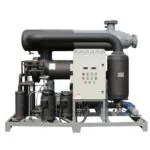
The 3885 CFM refrigerated air dryer (water cooled) is a high-capacity industrial solution designed for removing moisture from large-scale compressed air systems. Built for continuous and demanding operation, this water-cooled unit ensures a steady dew point and maximum system protection. Whether you're operating in petrochemical, steel, manufacturing, or pharmaceutical industries, the 3885 CFM refrigerated air dryer delivers superior drying performance and energy efficiency.
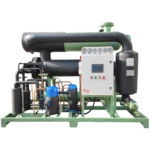
The 4238 CFM refrigerated air dryer (water cooled) is a high-capacity, industrial-grade dryer designed to eliminate moisture from large compressed air systems. Built with a powerful water-cooled refrigeration circuit, this dryer ensures reliable and continuous moisture removal with a stable pressure dew point. For industries that demand high airflow rates and dependable air quality, the 4238 CFM refrigerated air dryer (water cooled) is the ideal solution.
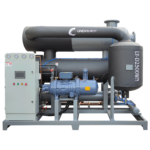
The 8830 CFM refrigerated air dryer (water cooled) is a top-tier industrial solution engineered to remove moisture from large-scale compressed air systems. Built for ultra-high capacity applications, this dryer ensures consistently dry air with a stable dew point and superior thermal control using an advanced water-cooled condenser system.

